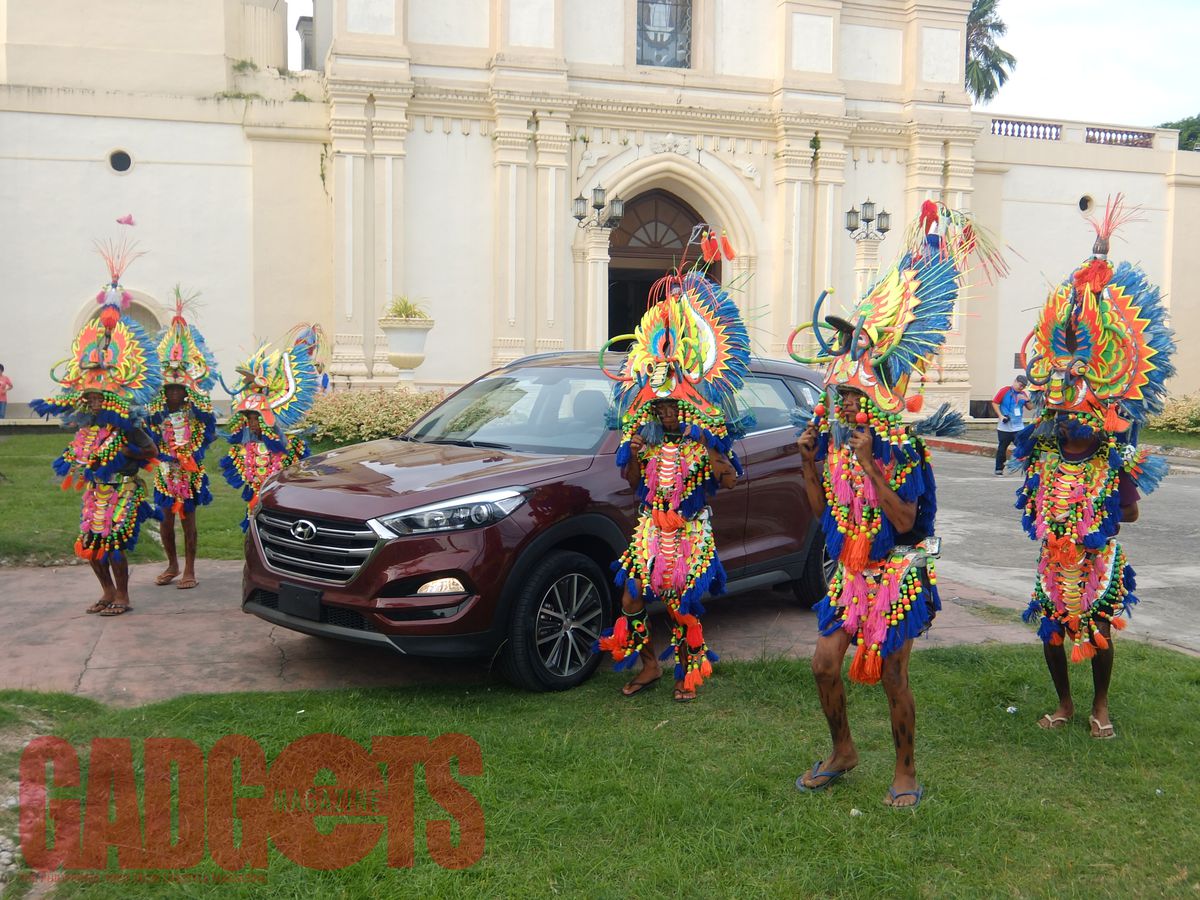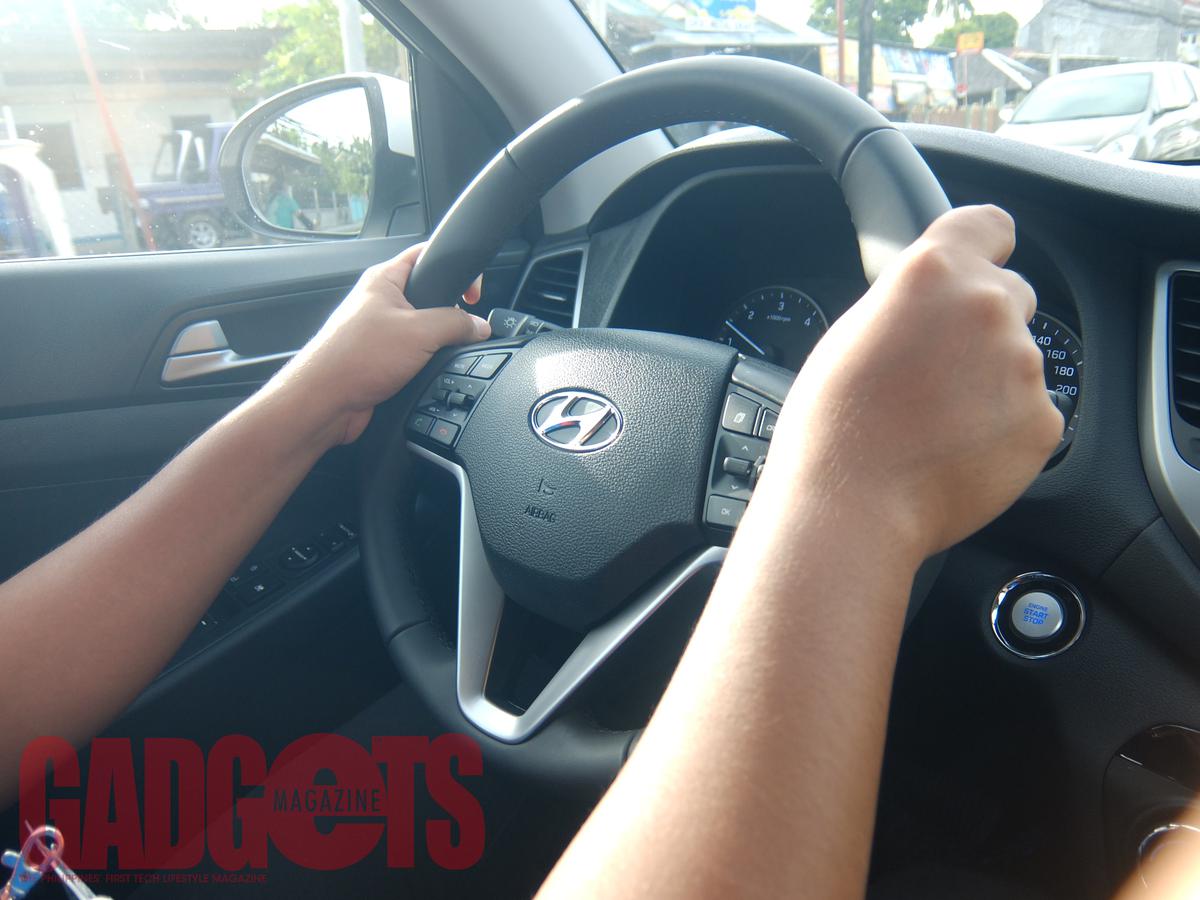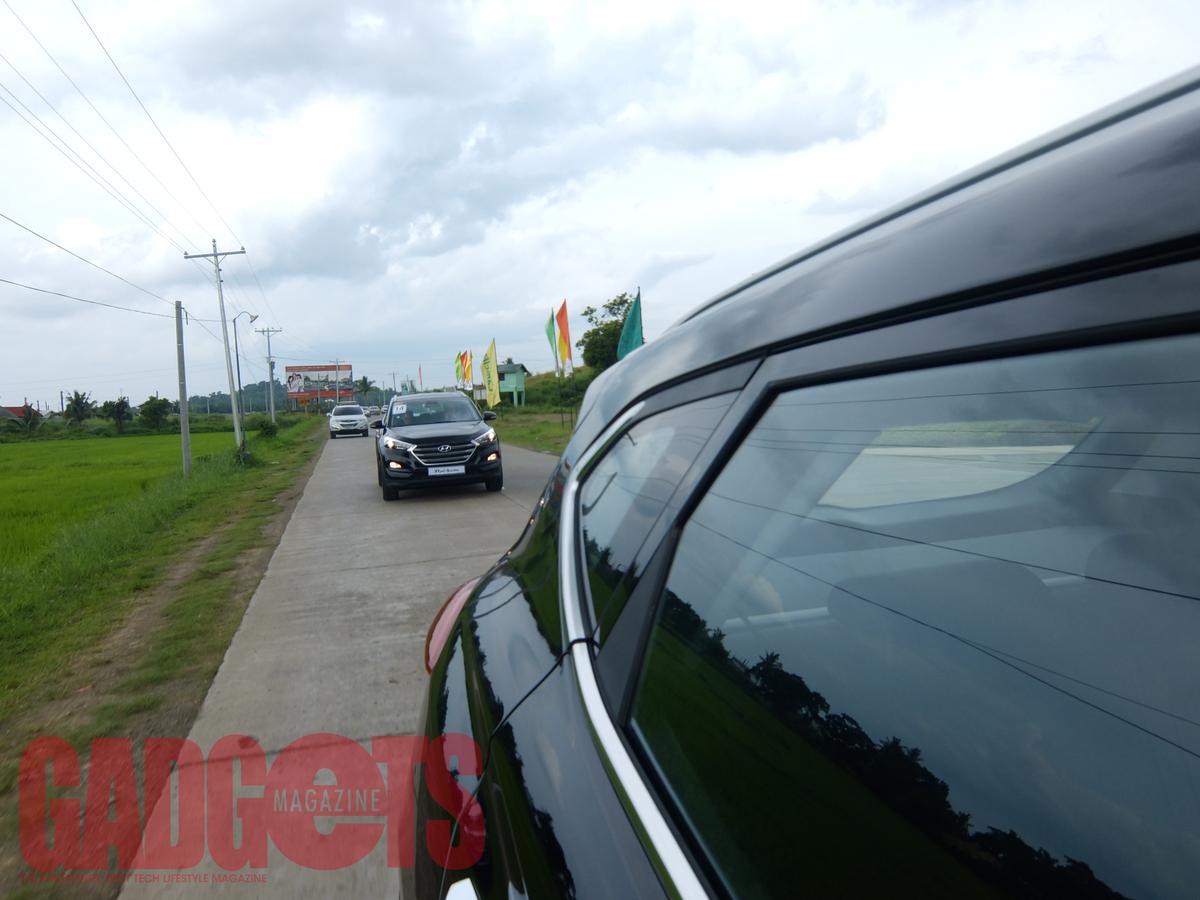Built like an SUV, handles like a sedan, and with the footprint of a subcompact, the Hyundai Tucson is a vehicle that, in the words of the great Muhammad Ali, “floats like a butterfly, stings like a bee.” With its decisively powerful revs and comfortable interior, Hyundai bills the all-new Tucson as a dual-purpose car that allows customers to enjoy both urban and rural driving conditions with equal bravado.
To prove their point, Hyundai Motor Company, through their local arm Hyundai Asia Resources Inc. (HARI), organized the Road to Boracay media test drive last August 19 to 21 which saw motoring press from the Philippines and Malaysia cruising the scenic Pan-Philippine Nautical Highway from Roxas City to Caticlan on board the all-new Tucson compact crossover. Three trims were made available during the drive, namely the 2WD Gas, 2WD CRDi, and 4WD CRDi variants.
The new Tucson is a definite looker, drawing a ton of glances from bystanders and other motorists along the route. Its exterior carries Hyundai’s characteristic Fluidic Sculpture ethos, with sweeping lines and aggressive contours, hexagonal grille, LED head lamps, and extra-wide rear combination lamps combining for an athletic finish.
The interior is unexpectedly roomy, with enough space for a big man such as myself to comfortably move around without bruising my elbows and shins. Ingress and egress were pleasant as well, thanks to the Tucson’s optimized seatback angle and distance off the ground.
Meanwhile, the over 150km drive was made more enjoyable by the presence of various creature comforts, including a hands-free entertainment system on the center console, full auto air conditioning system with individual climate controls for the driver and passenger, power windows, auto light control, overhead console with reading lamps and a sunroof switch (for the 4WD model), and ventilated seats and glove box. Coupled with better NVH levels, the Tucson promises passengers maximum comfort.
The drive saw the media traversing long stretches of farmlands, serpentine ascents over hills, and gradual descents down winding roads–all in wet and dry conditions. The Tucson was more than eager to zoom along straightaways, egged on by the slightest step on the accelerator while stopping on a dime with equal ease. Likewise, the Tucson made easy work of the sudden curves and tight turns it had to navigate. Thanks to its McPherson strut type front and multi-link rear suspensions, it handled well and was able to maintain reassuring road grip even when taking corners at speed.
Switching to the driver’s side of the car, the Tucson is fitted with a tilt/telescoping steering column and a three spoke steering wheel with media buttons as well as controls for the supervision cluster information panel. A host of smart technologies also enable the driver to drive safer and more efficiently on the road. These include Electronic Stability Control with 4WD assistance, Blind Spot Detection, Down-Hill Brake and Hill-Start Assist controls, and Front and Rear Parking Assist System.
The all-new Tucson is powered by either a 2.0 MPi gasoline power plant with a maximum output of 157ps @ 6200rpm and 196Nm of torque @ 4000rpm; or a 2.0 CRDi diesel engine outing a maximum 178ps @ 4000rpm and 402Nm of torque @ 1750 to 2750rpm. Both variants are also paired with a 6-speed automatic gearbox and are available in either Euro 2 or Euro 4 certifications.
Pure white, platinum silver, galaxy pearl, pepper gray, ara blue, milk tea, sepia topaz, sedona orange, ruby wine, and phantom black exterior color options are on-hand to go along with the black one-tone, gray two-tone, and beige two-tone interior aesthetics. It’s expected to hit international markets within the year.
Photos by Chris Noel Hidalgo







